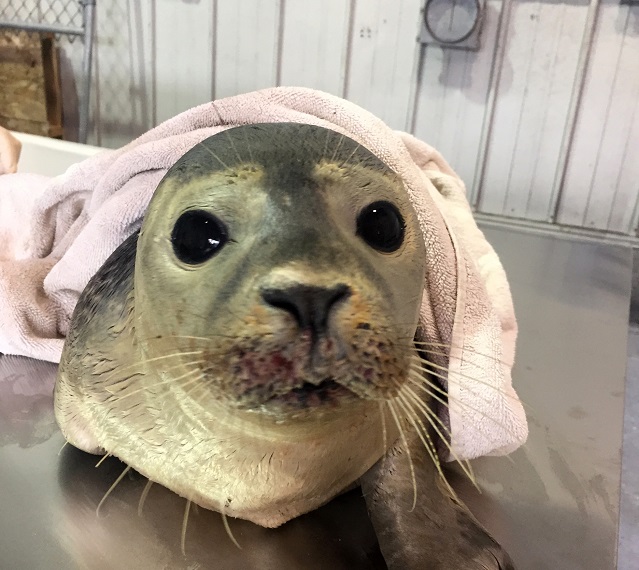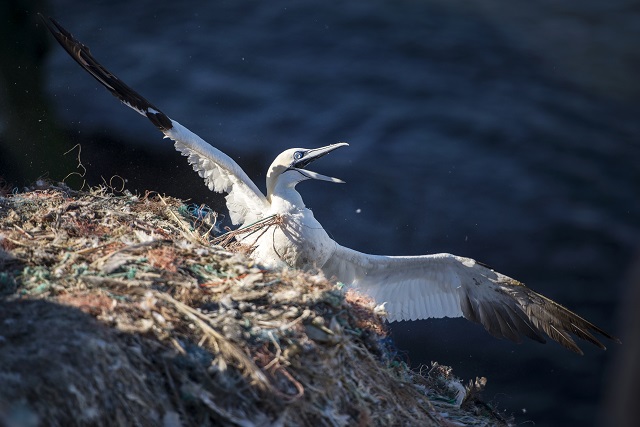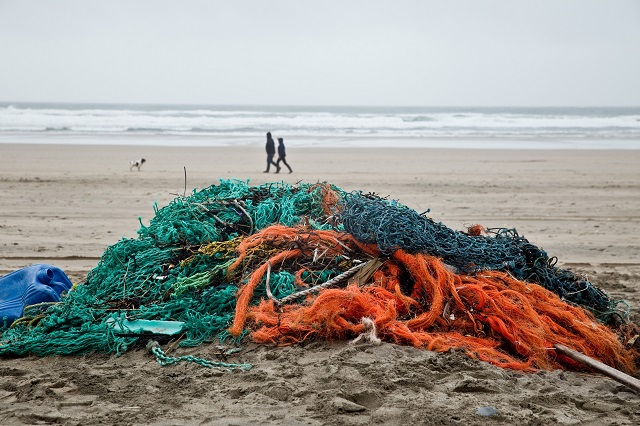Ghost Fishing Gear: A Global Responsibility
 Long after its initial use, lost fishing gear persists in the world’s oceans, for hundreds of years. It may travel vast distances and is found in every ocean and sea on earth. These lost, abandoned, or otherwise derelict fishing nets, known ominously as “ghost gear,” add to the perils for animals in the ocean.
Long after its initial use, lost fishing gear persists in the world’s oceans, for hundreds of years. It may travel vast distances and is found in every ocean and sea on earth. These lost, abandoned, or otherwise derelict fishing nets, known ominously as “ghost gear,” add to the perils for animals in the ocean.
Every lost fishing net is a floating death trap. Hundreds of thousands of animals are killed every year by the approximately 640,000 tons of gear that are left in the world’s oceans. World Animal Protection estimates entanglement in ghost gear kills at least 136,000 seals, sea lions and large whales every year. An inestimable number of birds, turtles, fish and other marine species are injured and killed too.

Earlier this month, Australian authorities pulled a two kilometer, five ton ghost net out of the Gulf of Carpentaria, a hot spot for both ghost nets and endangered marine turtles. If left to drift that net would have entangled hundreds of turtles over its life.
Once entangled, marine life can drown within minutes or endure long, slow deaths lasting months or even years.
Ghost gear is a problem without simple villains or easy solutions. Gear loss is most often caused by commonplace occurrences, such as extreme weather, strong currents or gear conflicts between active trawlers and static nets.
Further complicating this issue is the fact that ghost gear often travels long distances from its point of origin meaning those who are impacted are often not instigators of the problem. This is a particular issue in northern Australia where 90 percent of the nets washing into the Gulf of Carpentaria have drifted in from South East Asian waters.
The transnational nature of the ghost gear problem means that global, collaborative solutions are imperative to solving it. The Global Ghost Gear Initiative, the world’s first cross-sectoral alliance dedicated to driving solutions to the problem of lost and abandoned fishing gear. It was launched by World Animal Protection in 2015 with participants from the fishing industry, the private sector, civil society, governments and intergovernmental organizations including Australia’s Northern Prawn Fishery, GhostNets Australia, Young’s Seafood, Secretariat of the Pacific Regional Environment Programme and the U.S. Government’s NOAA’s Marine Debris Program.
 Credit: Sam Hobson
Credit: Sam Hobson
Solutions to ghost gear will also be on the agenda at the July 2016 meeting of the Committee on Fisheries (COFI) in Rome, a subsidiary body of the U.N.’s FAO Council – a major meeting on the global fisheries management calendar held every two years.
A crucial aspect of solutions proposed will include prioritizing the marking of fishing gear. While seemingly simple, gear marking has the potential to be a game changer. Enabling recovered gear to be tracked back and returned to its source.
Gear marking would also help to combat illegal, unreported, and unregulated fishing which threatens ocean ecosystems around the world. Finding and implementing sustainable solutions to such a complex problem is difficult – but it’s also an opportunity to shape a better future for marine industries and animals alike.

Nicola Beynon is the Head of Campaigns for Australia at World Animal Protection.
The opinions expressed herein are the author's and not necessarily those of The Maritime Executive.
